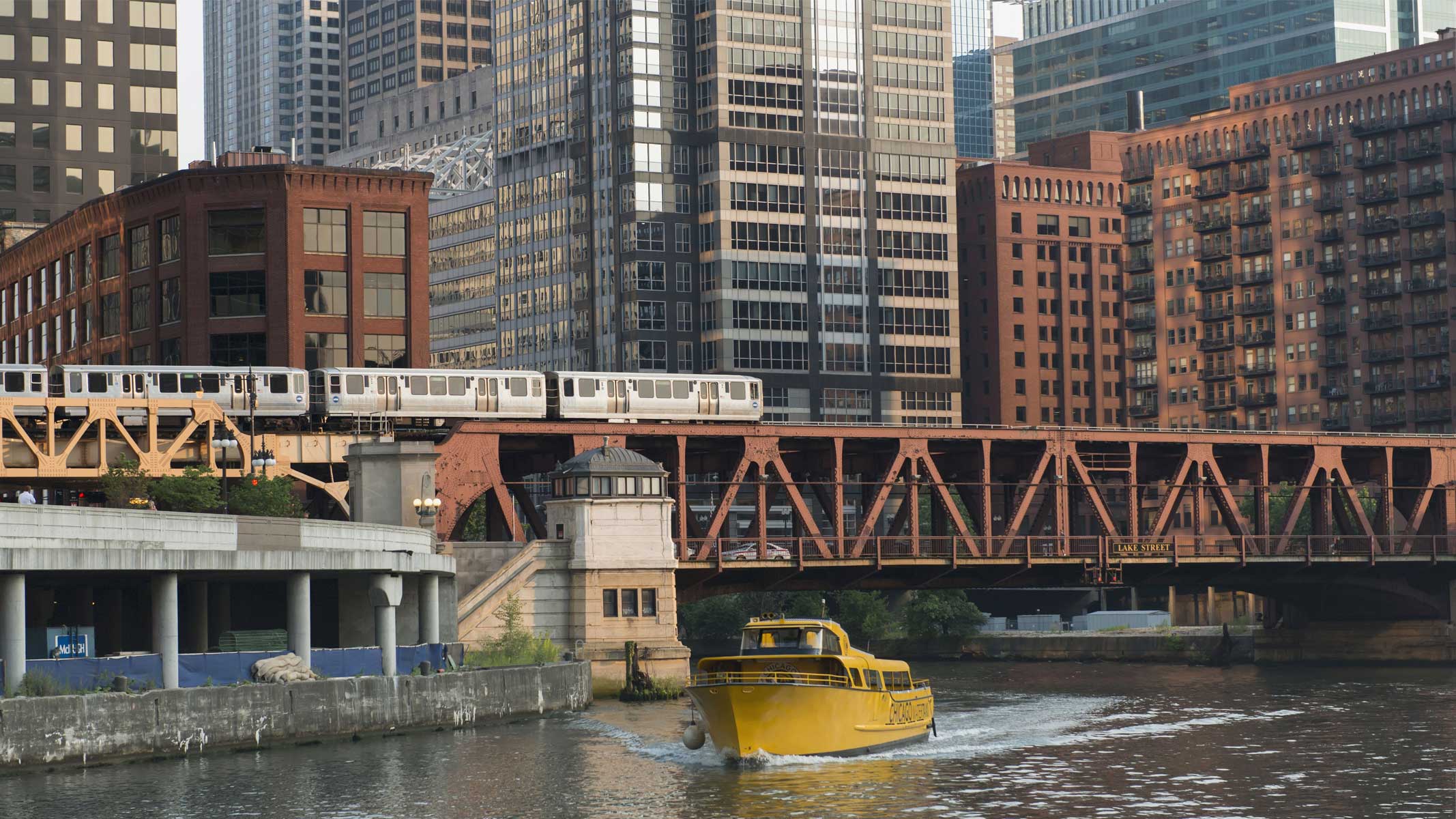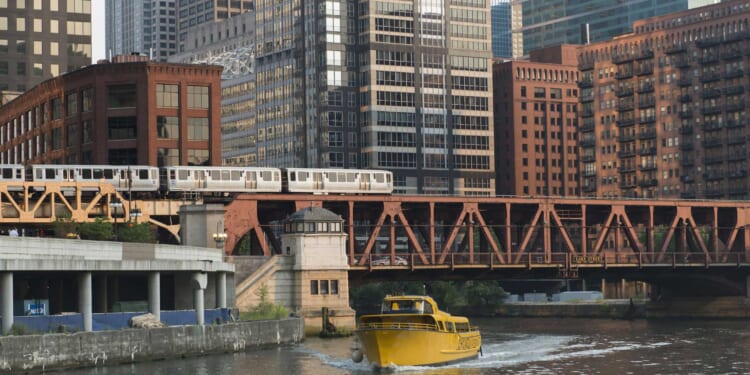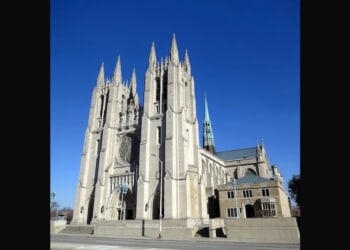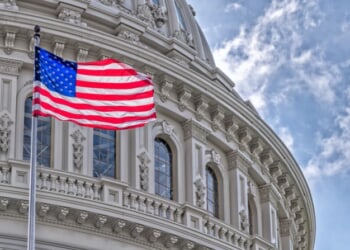
In the post-Covid era, running transit systems has become so costly that even longtime supporters are starting to balk. With ridership still depressed and federal Covid funds exhausted, agencies now face billions in unfunded expenses. In some places—New York, for instance—lawmakers have already passed steep tax hikes to bankroll hundreds of millions in new subsidies. But in states like California and Illinois, officials have sidestepped the issue, scrambling for revenue instead of tackling the soaring costs driven by the lavish wages and benefits of unionized transit workers.
Covid lockdowns crippled transit ridership. The number of residents taking public transportation declined by as much as 90 percent in the spring of 2020. Monthly rail-passenger trips slumped to just 2.8 million in April 2020, from about 46.3 million in October 2019.
The road back from those losses has been excruciatingly long. By September 2023, monthly ridership had rebounded only to 27 million. Commuter buses experienced the same percentage ridership plunge and by late 2023 had recovered only about 40 percent of their former customers. Even today, total mass transit trips remain at 80 percent of pre-Covid levels. Rail systems have struggled the most.
Underlying these trends were the extended lockdowns, which altered workers’ behavior. As many as 32 million Americans are still working from home today, either full-time or several days a week. Other commuters have resumed driving to work or using other non-public options.
Rising crime following the de-policing momentum of 2020 worsened the situation. Though ridership remained well below historical numbers in 2021 and 2022, the rate of violent-crime offenses rose. Well publicized incidents, like the recent slaying of Ukrainian refugee Iryna Zarutska on a Charlotte, North Carolina, light rail train by a mentally disturbed man, have stoked those fears.
The extended slump has added to transit systems’ financial stresses. Before the pandemic, passenger fares accounted for only 43 percent of transit system costs, according to a study by the Government Accountability Office. The rest of the money came from federal, state, and local subsidies. By 2023, fares slumped to just 24 percent of operating expenses. One-time federal Covid funding made up for a big percentage of those lost revenues, rising from $11.9 billion in 2019 to $28.6 billion by 2022. But that money has now largely been consumed, resulting in an estimated $6 billion national shortfall.
Facing this funding emergency, several Democratic governors and their legislatures have considered controversial efforts to bail out struggling systems. Early this summer, as California leaders tussled with a $12 billion state budget crisis, Governor Gavin Newsom delayed addressing a $750 million shortfall racked up by San Francisco’s system. The city’s BART, a rail system, is symptomatic of the problems—it is still operating at only 45 percent of pre-Covid capacity.
Newsom and the legislature resisted approving a massive loan guarantee, which prompted transit leaders to look elsewhere for the money. By late summer, the system—which includes San Francisco Muni, AC Transit, and Caltrain, as well as BART—was looking at massive service cuts when the state finally agreed to step in with temporary financing as it figures out how to address the operating deficit. Among other things, Newsom has demanded state oversight of how the transit systems spend any money California sends them.
Illinois governor J. B. Pritzker confronted a similar problem. This spring, his state struggled with a $3.2 billion budget deficit and a simultaneous $770 million shortfall in the budget of the Chicago area’s Regional Transportation Authority. The state raised several taxes to help reduce its deficit, but legislators balked at additional increases to close transit deficits, including a $1.50 charge on retail deliveries and a real estate transfer tax. Pritzker may call a special fall session of the legislature. Transit officials say that, without some quick solutions, layoffs and service cuts may be necessary.
Officials in Oregon and Pennsylvania are plagued by similar troubles. Portland’s regional transit system is dealing with an annual $300 million deficit. This spring, Democrats in the legislature put together a package of increases in the gas tax and car-registration fees, worth hundreds of millions of dollars in new revenue. But the size of the increase scared off many legislators, and the funding bill failed.
Meantime, the Philadelphia-area transit system SEPTA is grappling with a $213 million budget deficit, with rail ridership still only about 70 percent of pre-Covid levels. In August, SEPTA cut service by 20 percent; it was able to restore the cuts only after it tapped into funds typically reserved for maintenance and building new facilities. Republicans in the State Senate’s majority are uncomfortable with the size of the system’s losses and reluctant to approve additional taxes. Legislators have criticized SEPTA’s performance, focusing, for instance, on an estimated $50 million annually in losses from fare evasion that, until recently, SEPTA was doing little to combat.
With all these struggles, there’s been too little talk about reforming and restraining spending, especially employee costs. The nation’s biggest transit systems operate in overwhelmingly Democratic-run cities and states, and local politicians have consistently granted their unionized workforces generous pay and benefits packages. NJ Transit engineers, for instance, went on strike for three days in May, demanding a big pay boost despite the system’s dependence on more than $2 billion in subsidies. Passenger fares, still $200 million below 2019 levels, now cover just 25 percent of costs.
Meantime, salaries and benefits alone amount to more than double passenger revenues. For every dollar NJ Transit spends on wages, it spends another 83 cents on fringe benefits. In the private sector, fringe benefits amount to just 30 percent of salaries, on average.
That didn’t stop the system’s engineers from walking out last spring, demanding parity with Metro-North engineers in New York, who earn about $172,000 a year. They secured a substantial raise and guaranteed annual increases for the next several years. NJ Transit, meanwhile, hiked fares again in July, the second consecutive year of increases.
In response to New Jersey’s deal, engineers on Long Island have threatened a strike unless the Metropolitan Transportation Authority ups their wages, too. Their demands come after New York lawmakers earlier this year increased the state’s payroll mobility tax on businesses by some $1.4 billion to pay for New York City-area commuter transit’s growing deficits.
A similar dynamic is playing out in San Francisco and Chicago. San Francisco’s transit system has seen its revenues decline by half since 2019. Revenues now account for just 19 percent of operating costs, down from 48 percent re-Covid.
Throughout this decline, employees have received several big wage bumps. Last year, employee costs accounted for $96 million of the $142 million rise in the system’s expenses. That included higher wages and a $46 million hike in pension costs, thanks to the California pension system failing to hit its anticipated investment goals. Officials project that ridership this year will be just 43 percent of pre-pandemic numbers. Yet, rather than cutting employees, the San Francisco transit system added some 61 new positions last year.
Labor costs are even worse at the Chicago Transit Authority, the key element of northern Illinois’ Regional Transportation Authority. Fares and other revenues totaled just $454 million last year, a mere 21 percent of operating costs. Amid this fiscal emergency, labor costs are rising by 11 percent this year. The cost of the system’s employees alone amounts to more than three times what the CTA collects from passengers.
At the same time, the system has been unable to manage overtime costs, which have soared 40 percent over the last five years, according to a media investigation. Last year alone, the system logged $120 million in overtime; more than 100 employees doubled their base pay through overtime.
Crime rose sharply on CTA trains last year, leaving some Illinois legislators wondering what they’re getting for all that money. “Wouldn’t you expect to have an on-time, safe and clean transit system?” asked the head of the state’s House of Representatives Transportation Committee, Representative Marty Moylan.
Advocates warn that without more subsidies, mass transit could fall into a death spiral: deficits lead to service cuts, which drive riders away and shrink revenues further. For decades, taxpayers and elected officials accepted subsidies as a public good, but with costs exploding and ridership sinking, the majority who don’t use transit are tiring of the burden. The deepest deficits are in states and cities where politicians gave transit unions extraordinary power to bargain, strike, and drive up costs—effectively holding systems hostage. Without reform of employee expenses, the load on taxpayers will only grow heavier.
Photo by: Keith Levit/Design Pics Editorial/Universal Images Group via Getty Images


















